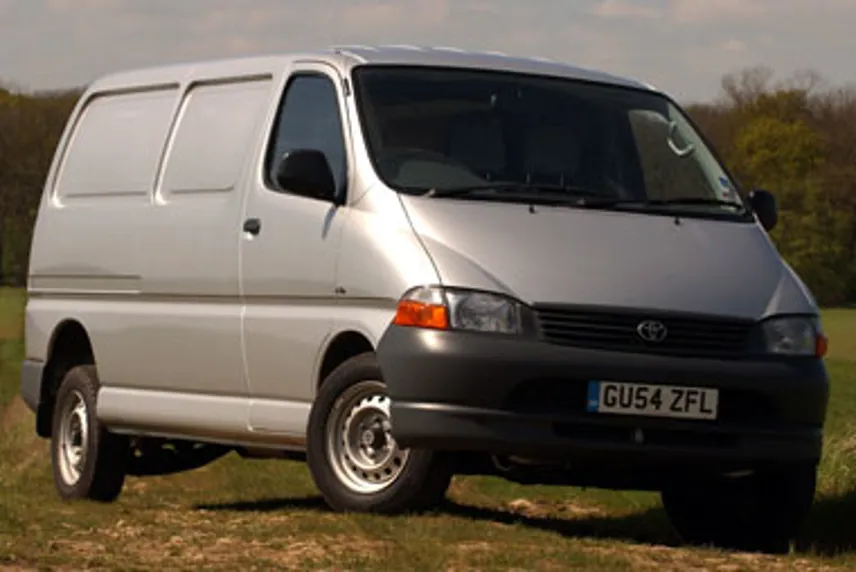Review
Let it be said before commencing this article that I am totally biased towards the Toyota Hiace.
I know that as a motoring journalist I am supposed to sit firmly on the fence and be 100% objective in my views, but the Hiace will always hold a special place in my heart. Let me explain...
Back in 1997, I was production editor at Fleet News and during my fifth mid-life crisis I decided to quit my job and go off travelling around the world.
After a six-month spell in America, I eventually ended up in New Zealand where, rather than dossing down in a series of grubby backpackers’ hostels, I bought an ageing Hiace from a local farmer.
It had 280,000 kilometres on the clock and it looked as though his kids had been learning to drive in it, merrily clipping gates, walls and anything else that got in their way in the process.
I equipped my Hiace with a bed and a cooker and for six months, this vehicle was my home.
During that time it never gave me any hint of a problem.
When I finally headed back to Blighty in 1998, I sold the van to a couple of alternative lifestylers for the same money as I paid for it.
And guess what? I received a letter from them a couple of months ago informing me that my old buddy is still plugging away.
And that, in a nutshell, is why I will always love this van.
It also explains why the Hiace has achieved almost legendary status because mine is just one of many ancient specimens still plying the highways and byways of the world. They just never seem to die.
My van was the older-shaped version of the Hiace on test here.
This new incarnation has been around for some 10 years now so it isn’t exactly a spring chicken.
As such, it suffers a bit against some of the opposition – as will be explained later – but there are still plenty of fleets out there which will be happy with what this Toyota has to offer.
Two versions are available – short and long wheelbase – with gross vehicle weights of 2,800kg and 3,000kg.
All models come equipped with ABS brakes and a driver’s airbag.
Both are powered by a 2.5-litre common rail diesel engine offering either 88bhp at 3,800rpm and 141lb-ft of torque at between 1,200rpm and 3,000rpm or 102bhp at 3,600rpm and 191lb-ft of torque at between 1,600rpm and 2,400rpm.
Servicing is only necessary every 20,000 miles, with an interim oil change at 10,000 miles.
Extra versions were added at the end of 2004.
Entry-level 280 and 300 models at £11,985 and £13,485 have a rear tailgate, central storage box, remote central locking and a radio/cassette player, while GS models add heated/tinted rear window with wash/wipe, the option of twin rear doors for the heavier model, mudflaps, full windowed steel bulkhead and a tilt adjustable steering wheel.
The model on test here is the top-of-the-range GS Xtra 300 lwb, which adds air conditioning, radio/CD player and electric front windows.
Price is £15,855 (all prices ex-VAT).
Among the available options are sat-nav at £1,150 and full ply-lining at £140, along with a wide range of extras such as roof bars, parking sensors, lampguards and towbars.
There is also a Hi-Top version that increases loadspace by 17%. A refrigeration unit can also be specified.
The market
Toyota faces some serious problems in selling the Hiace.
The biggest is that while its offering is 10 years old, there are some cracking newer contenders, such as the Vauxhall Vivaro, Renault Trafic, Nissan Primastar, Mercedes-Benz Vito and Volkswagen Transporter.
Putting it mildly, the medium panel van sector is the most hotly contested of any in the LCV market.
The second problem is that Toyota doesn’t have a great range of vans.
Therefore if a fleet buyer wants, say, 10 Hiaces, five 3.5-tonne panel vans and a few car-derived models, it will have to look elsewhere for the bigger and smaller vans.
And then there’s the price.
At nearly 16 grand, this ain’t a cheap van.
You can buy a long wheelbase Vauxhall Vivaro 1.9CDTi for £15,120, although admittedly it won’t come with air-conditioning and power windows.
Outside
While most of the opposition have their roots firmly fixed in Europe, the Toyota is a Far Eastern offering through and through.
It shares more with its Korean-designed rival the LDV Maxus than the British-built Vivaro.
The door panels, for example, seem painfully thin compared to the European vans, but having said that, there is no reason to believe they are not perfectly adequate for the job.
The back and front of the van have big plastic bumpers but sadly there is no protection at all for the sides – an area that’s prone to annoying knocks and scrapes.
But clad in natty silver paintwork our Hiace certainly didn’t look a 10-year-old design – it is still as slick and stylish as you could wish for.
In the front
The bad news is that the cab of the Hiace looks and feels like a 10-year-old cab.
It’s basic fodder and won’t win any prizes in a beauty contest.
The good news is that in the world of vans, hardly anyone cares about looks.
Functionality is the key.
















